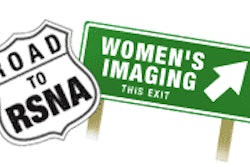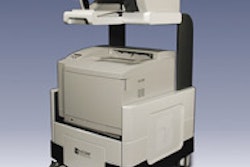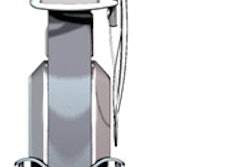Women with breast cancer spotted on a screening mammogram may be spared highly invasive and toxic treatment regimens, according to a study in the latest issue of the American Journal of Roentgenology. More importantly, older and younger women are most likely to benefit from less stringent treatment methods, even though the value of screening mammography in these two group remains controversial, the researchers found.
"Our study has contributed new information in that we found one-third of patients with cancer detected on screening mammography had tumors that were smaller than 1 cm in diameter and were node-negative, thereby placing them in a group for whom consensus guidelines would not recommend adjuvant chemotherapy," wrote Dr. Richard Barth Jr. and colleagues from Dartmouth-Hitchcock Medical Center and the Norris Cotton Cancer Center in Lebanon, NH (AJR, January 2005, Vol. 184:1, pp. 324-329).
Barth is from the institutions' department of surgery. One of his co-authors, Dr. Steven Poplack, is from the department of radiology.
While adjuvant cytotoxic chemotherapy is commonly used to treat breast cancer, the numerous side effects include physical ailments (alopecia, vomiting, neutropenia) and long-term neurological problems (memory loss, learning difficulties), they explained.
For this retrospective study, the group reviewed the medical center records of 992 women with invasive breast cancer detected either on mammography or during physical exam. The characteristics of the participants were compared to those of more than 1,600 women from the New Hampshire Mammography Network registry.
With regard to patient demographics, the researchers found that patients with mammography-detected cancers were slightly older and more likely to be postmenopausal than those whose cancer was discovered on physical exam. The tumors pinpointed with imaging were 1.5 cm compared to 2.9 cm for those detected on physical exam. These women also had lower tumor grades, and were less likely to have had angiolympathic invasion.
One-third of the women with mammography-detected cancers fell into a group for whom chemotherapy is not recommended. In addition, these patients were half as likely to have received chemotherapy, and were twice as likely to have been treated with breast-conserving therapy, the authors stated. This was especially true for women ages 40-49, they wrote.
Patients whose cancer was found on physical exam were twice as likely to have undergone a mastectomy and nearly three times as likely to have had chemotherapy. These statistics increased with a woman's age -- those in the 70-plus group were four times as likely to have received chemotherapy and five times as likely to have had a mastectomy if the cancer was found on clinical breast exam.
These latter figures in particular "make a compelling case for the use of screening mammography in elderly patients," they stated. Along with the results from the 40-49 age group, "these findings provide additional rationale for performing screening mammography, especially for women at age extremes for whom the survival benefit ... is debated."
By Shalmali Pal
AuntMinnie.com staff writer
December 29, 2004
Related Reading
Biennial mammography appears suitable for older women, December 15, 2004
MRI finds breast cancers missed by mammography in high-risk women, December 2, 2004
Most mammographic features cannot predict high-risk DCIS, November 28, 2004
Lack of screening accounts for most late-stage breast cancers in U.S., October 20, 2004
Copyright © 2004 AuntMinnie.com



















